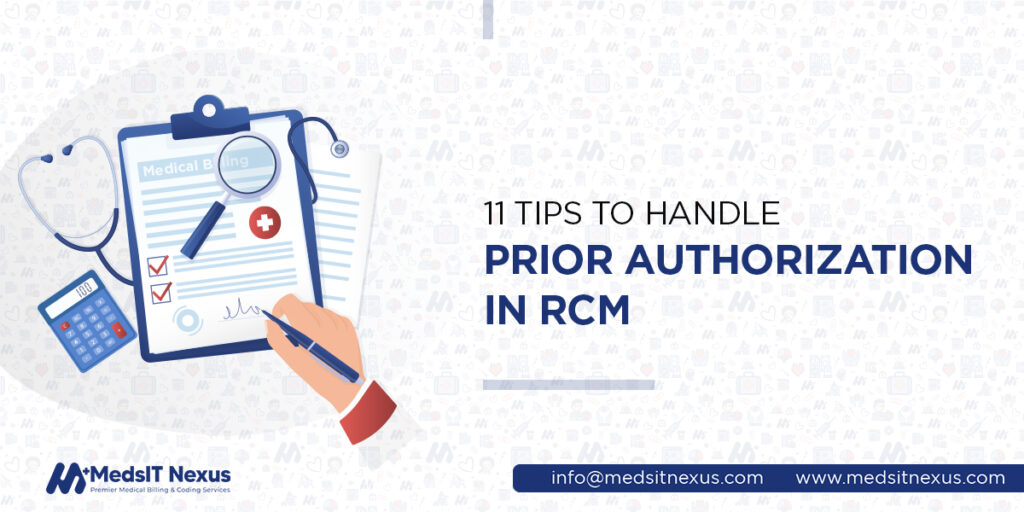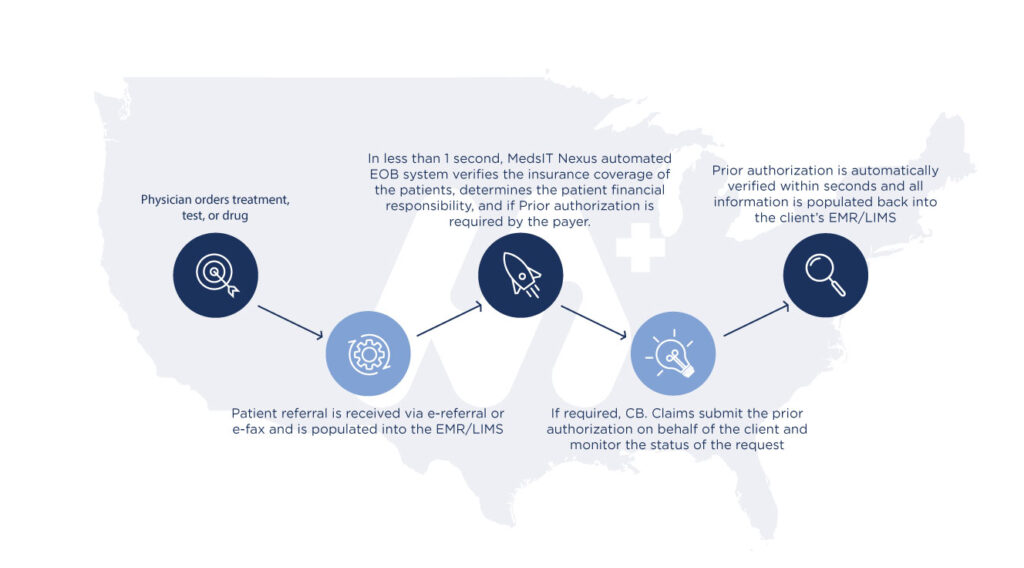
Prior authorization is a legal procedure that is a preliminary requirement from the regulatory authorities to process before a medical provider performs medical procedures to treat their patients; In this process, the clinician needs to contact a health insurance payer to check whether the patient’s respective insurance policy covers the prescribed medical treatment or not, It assures them whether they will get reimbursement for their rendered medical services.
When a person newly gets medical insurance, They are not aware of the standard protocols of the concerned payer, what type of their healthcare needs and treatments are covered by the insurance carrier; instead, they have a credulity that all their medical treatments will get paid by the insurance carrier. Having said that, if the medical practitioner claims to the payer for reimbursement without prior authentication of their services, a complete denial occurs from the payer’s end or releases a partial payment only for the services the insurance plan covers. In this case, a patient must spend out-of-pocket expenses, compromising revenue cycle management efficiency and, ultimately, the medical organization overwhelmed under the financial burden.
Prior authorization is an essential part of revenue cycle management, as it majorly impacts the financial health of medical providers, it also comprises too many legislative complications in the process, and physicians across the country feel prior authorization a pain. Studies stated that performing authentication and verification of the insurance claims and fixing prior authorization issues acquire 20 hours per week of physicians and costs nearly $83K per year, and these numbers will continue to climb. It causes exhaustive resistance to physicians in performing patient-centric medical practices, which is a severe legislative violation. Therefore, we are here to provide a brief guide to identifying some of the significant gaps in prior authorization causing a revenue leakage in medical practices.
This post will better understand insurance coverage verification, its importance in the healthcare industry, and the most effective tips to handle prior authorization in revenue cycle management.
Better governance of clinical documentation is an integrated approach to patient care that circumscribe all office components. It maintains the financial stability of private medical practices by streamlining claim processing and reducing denials. If the medical provider processes clinical documentation following standard protocols, the affected areas in the practice management processes are identified that can be improved primely before severe circumstances occur; this ultimately enhances service delivery and staff efficiency.
It is sufficient to demonstrate the importance of clinical documentation that 82% of medical organizations leverage their documentation to improve their quality of service, according to the Office of The National Coordinator for Health Information Technology. But its implication is not solely beneficial for patient care; it also serves an excellent purpose for improving the healthcare system.
Therefore to maintain clinical documentation qualitatively, you must ensure that your documentation comprises the following unavoidable characteristics.
The medical provider must be aware of the patient’s insurance plan and the concerned Payer’s standard protocols related to the reimbursement. You must know which category of medical procedures and treatments his insurance carrier covers. Consider an example: If the payer does not cover Pediatric Dermatology, the treatment does not fall under the specific diagnosis code, or the patient’s visit falls under a particular scope of care. For this specific situation, the medical provider must know that the insurance provider will not reimburse the payment if he provides this medical treatment.
The patient’s help desk staff is overwhelmed by many practice management processes where the prior authorization and insurance benefits verification is one of them. It is a significant time-exhaustive stage where your staff juggles with the insurance companies spending time on the phone, calling, and answering about scheduling appointments. Therefore, because of the administrative and legislative complexities in the process, you must ensure that your staff is highly proficient in overcoming these complexities through their in-depth knowledge about Insurance verification. Your team must have experience processing payments and be adept at managing claims with insurance companies.
Prior authorization extensively comprises documentation work; if medical providers process it manually, they get overwhelmed with paperwork and other manual processes, which puts a strain on their precious time. Their time is misused in administrative tasks; hence they fail to deliver patient-centric medical practices, which is an open legislative violation.
You can get an idea of how manual clinical documentation is giving rise to the epidemic of physician burnout from the Annals of Family Medicine report, which states that medical providers spend more than 6 hours from their working hours in processing patients’ documents for the prior-authorization.
Therefore, rather than relying on an antiquated system of fax machines and stopgap manual activities, there is a crucial need to go ahead with prior authorization and streamline the process with automation. To truly automate the process, you need to implement an end-to-end approach that includes

As per the legislative regulations, such as the No Surprises Act and the price transparency rule, medical providers must build a transparent conversation regarding finance with their patients. The patients of the current times necessitate knowing in advance what they are signing up for before a medical procedure is performed. Therefore, the medical providers must ensure a thorough conversation with the patients to create a document complying with standard protocols maximizing the patient experience.
Because of the periodic evaluation in the legislative regulations, complexities in prior authorization have also overburdened clinical staff with too much paperwork, which resists them from effectively performing their primary role, treating patients. In these circumstances, MedsIT Nexus medical billing and coding services can solve the pre-authorization challenges as we are equipped with a fully automated and orchestrated solution that operates in real time. Furthermore, our solution is significantly efficient that can automatically synch prior authorization rules as part of a comprehensive rules library. To learn more, contact us for a demonstration.
© MedsIT Nexus. All rights reserved 2024. Powered by MeshSq.